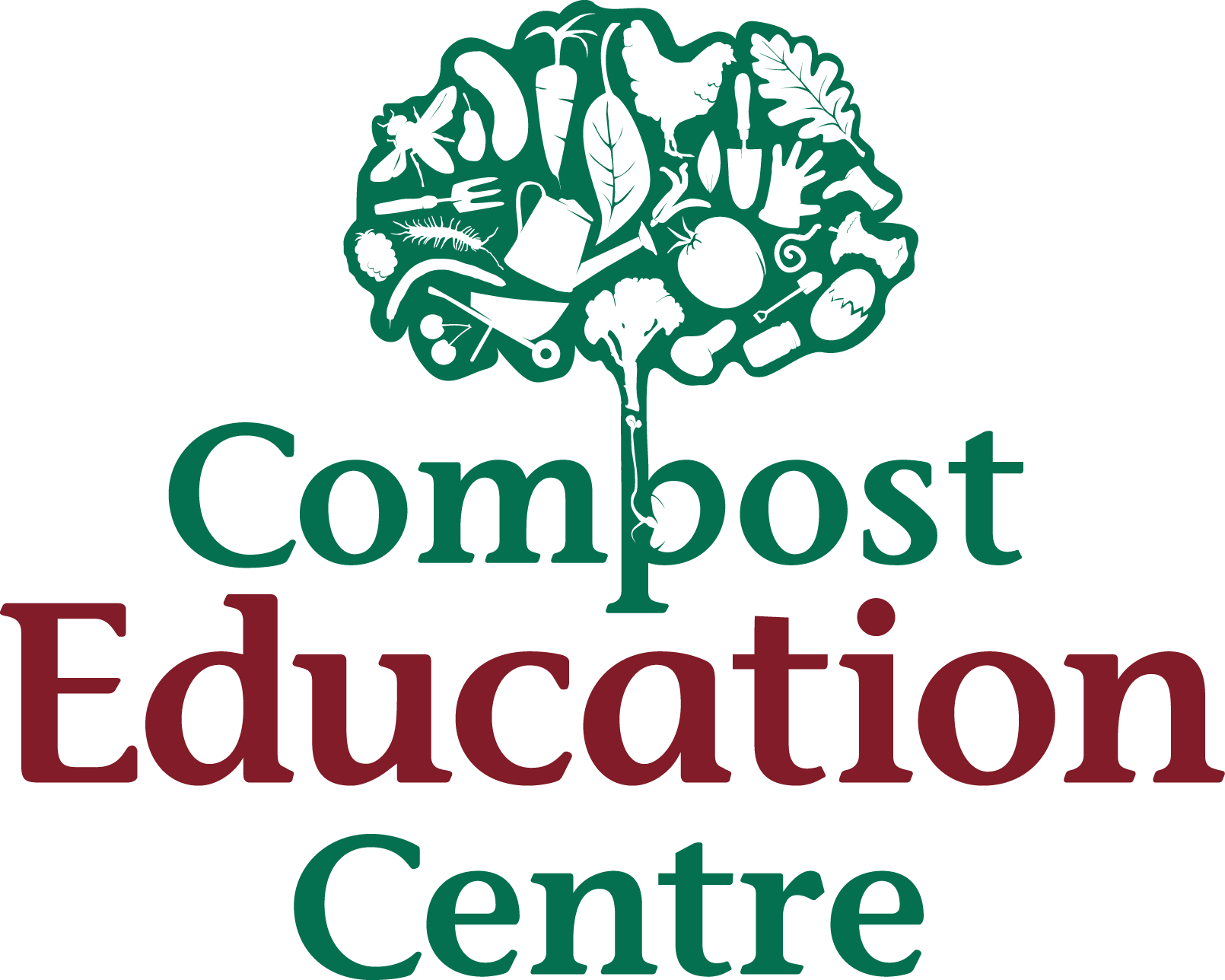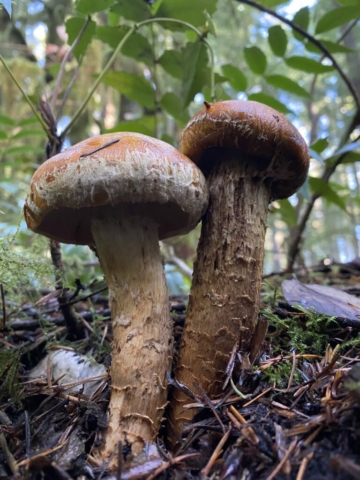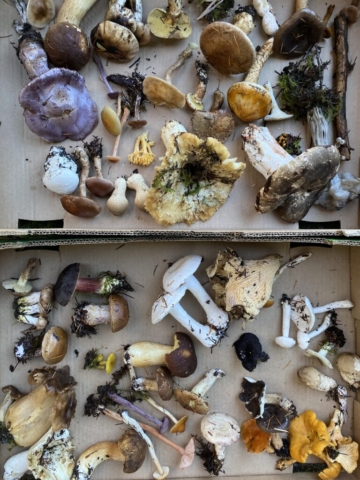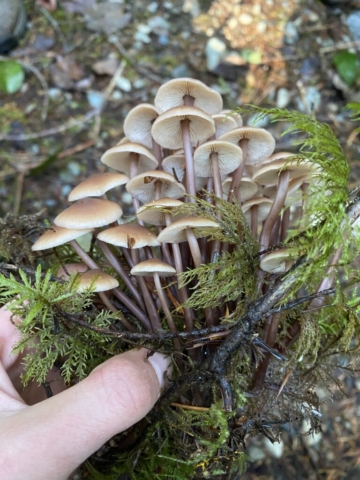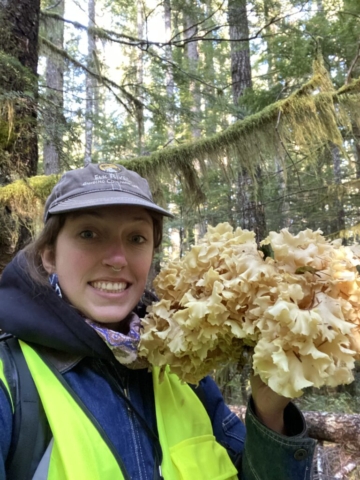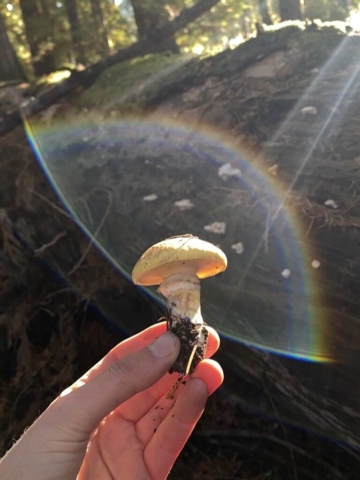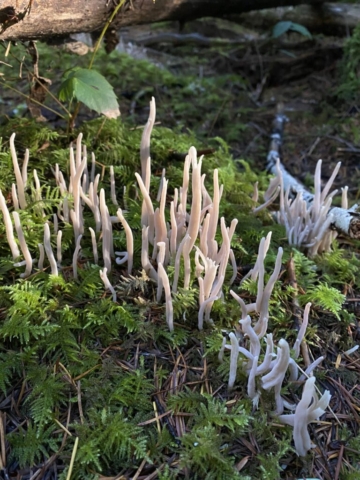Mycology at the CEC
December 20, 2023

Ever since moving to the coast, I’ve been fascinated by flora and have spent a lot of time learning the names of the plants around me and how to recognize them. While spending so much time in the forest admiring plants, it became hard to ignore fungi when fall rolled around. Since 2021, I’ve been equally enamored with the fungal diversity that can be found here on the south island, which led me to join the South Vancouver Island Mycological Society (SVIMS). Joining the mycological society has been very fun, and has provided me the opportunity to learn from countless experts while expanding my knowledge of the fungal kingdom.
This fall, the CEC supported me in attending SVIMS’s annual Cowichan Lake Foray as a professional development opportunity. The Foray is a Friday-Sunday event consisting of several guided mushroom walks, identification and generally a survey of the fungal biodiversity in the area. There were a plethora of amazing things out there, but my mushr.oom find of the weekend was definitely finding my first Cauliflower mushroom (Sparassis radicata), which I was able to take home and cook with my roommates. Another fun part of the weekend was getting to help out in the identification room a bit. When I first joined SVIMS, I mostly practiced “keying out” mushrooms that others already knew what they were to get familiar with the process. Keying out is the process of identifying fungi using guidebooks and other resources. This time around, I tried my hand at keying out mushrooms that hadn’t yet been successfully IDed and ended up identifying one of them as a Tricholoma species that we only found one potential previous record of having been observed in British Columbia. SVIMS ended up sending it for DNA sequencing so it’ll be exciting to see if the results are a match for the ID I made!
Compared to plants and animals, there is a lot more we don’t know about what fungi species we have here in North America. Many species here are currently named for similar European species, but as more genetic sequencing is done, we are discovering that the species are distinct from their European counterparts and/or what we previously considered to be just one species is actually several. For this reason, even the most amateur mycologist can make interesting contributions by observing, documenting, and preserving specimens they find. While learning about the ever-evolving taxonomy of fungi is interesting, it’s even more intriguing to learn about all the various roles fungi have in the ecosystem as well as the ways they interact with plants, insects, animals. and everything in the forest.
In my role running the semester long Let it Rot (LIR) program at high schools in the CRD, it has been so great to get to incorporate mycology with the knowledge I’ve gained at SVIMS over the past two years. This fall, I ran a mycology unit as part of LIR which included a guided mushroom walk, a lesson in documenting fungi using field slips, recording key information, properly collecting and taking spore prints. We also learned about fungi’s many roles in the ecosystem and wrapped it up with some fungi trivia. The students were quite excited about mushrooms and got really into trying to spot them. Even this week in early December weeks after our mycology unit students were asking if we could do another mushroom walk. I’ll be looking forward to another mycology unit in 2024 when some spring fungi are out. And stay tuned for an adult introduction to mycology workshop fall 2024!
By Elora Adamson, Child & Youth Education Manager
